
Brian Kelch
@briankelch.bsky.social
My lab at UMass Chan Medical School studies virus assembly and DNA replication/repair using structural biology, biophysics, and biochemistry. Habitual Line-Stepper.
umassmed.edu/kelchlab
umassmed.edu/kelchlab
I’d also like to thank all coauthors for their work on this manuscript, including lab alumni Drs. Jacob Landeck and Xingchen Liu, grad student Krishna Anand, and high school intern Sasha Litvak; UMass Chan cryo-EM facility staff Drs. Song, Chang & Ouch; and you for reading! (16/16)

a man in a suit and tie is giving a thumbs up sign .
ALT: a man in a suit and tie is giving a thumbs up sign .
media.tenor.com
July 7, 2025 at 7:06 PM
I’d also like to thank all coauthors for their work on this manuscript, including lab alumni Drs. Jacob Landeck and Xingchen Liu, grad student Krishna Anand, and high school intern Sasha Litvak; UMass Chan cryo-EM facility staff Drs. Song, Chang & Ouch; and you for reading! (16/16)
I’d also like to point out that Josh never picked up a pipette before joining my lab! His PhD is in Mech Eng and purely computational! Yet in a short time he mastered biochem such that he was developing badass assays and his grid prep skillz are copied by others around UMass. (15/16)
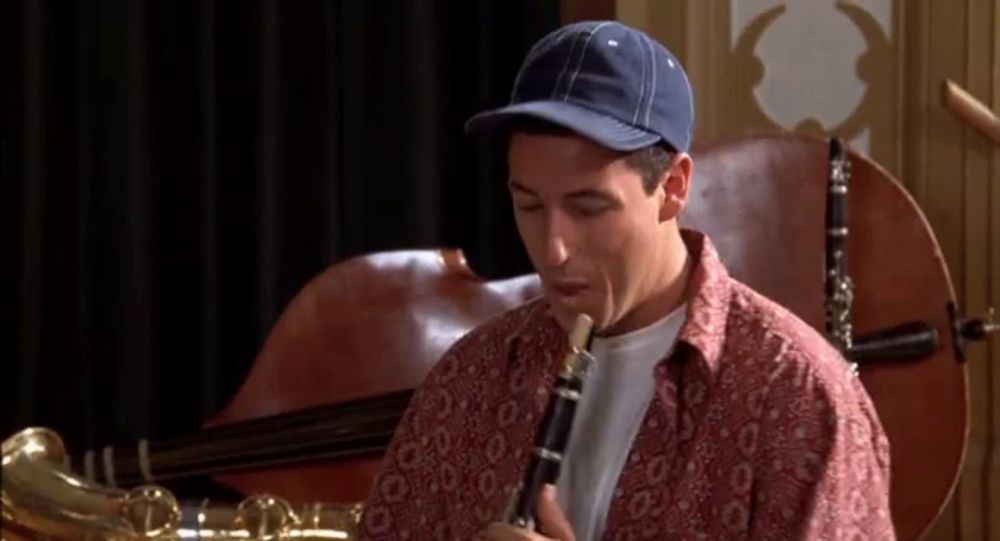
a man wearing a hat is playing a clarinet in front of a saxophone .
ALT: a man wearing a hat is playing a clarinet in front of a saxophone .
media.tenor.com
July 7, 2025 at 7:06 PM
I’d also like to point out that Josh never picked up a pipette before joining my lab! His PhD is in Mech Eng and purely computational! Yet in a short time he mastered biochem such that he was developing badass assays and his grid prep skillz are copied by others around UMass. (15/16)
At a time when science funding is so precious, we want to acknowledge that our work is NIH NIGMS funded, @joshua.pajak.bsky.social is funded by an American Cancer Society postdoc fellowship, and our MD sims used resources provided by NSF @accessforci.bsky.social and UMass Chan SCI. (14/16)
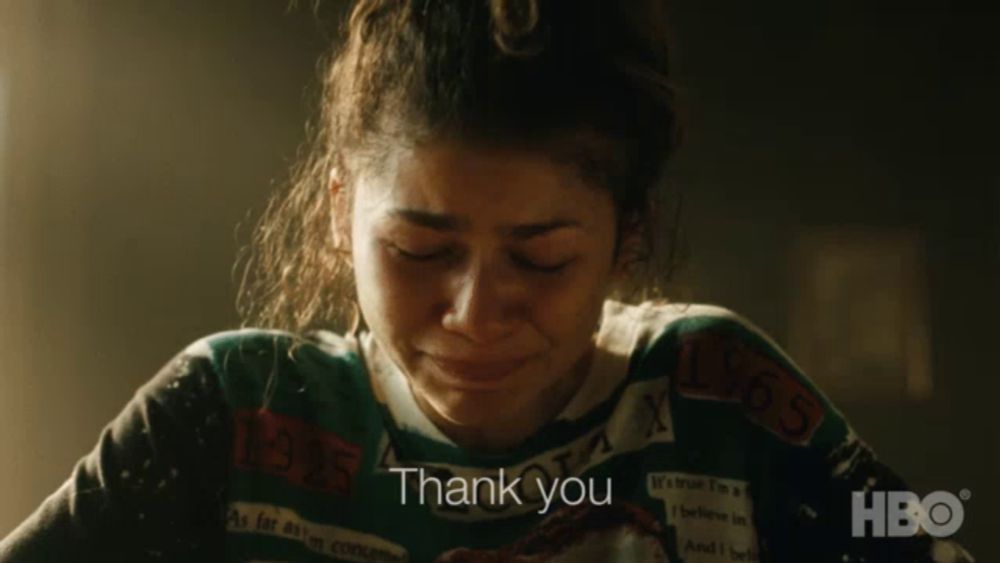
a woman wearing a sweater that says thank you on it
ALT: a woman wearing a sweater that says thank you on it
media.tenor.com
July 7, 2025 at 7:06 PM
At a time when science funding is so precious, we want to acknowledge that our work is NIH NIGMS funded, @joshua.pajak.bsky.social is funded by an American Cancer Society postdoc fellowship, and our MD sims used resources provided by NSF @accessforci.bsky.social and UMass Chan SCI. (14/16)
RFC is conceptually analogous to a GTPase, which has dedicated Nucleotide Exchange Factors and NTPase Activating Partners. What makes RFC unique is that its own substrates are the NEF (PCNA) and NAP (DNA). (13/16)

July 7, 2025 at 7:06 PM
RFC is conceptually analogous to a GTPase, which has dedicated Nucleotide Exchange Factors and NTPase Activating Partners. What makes RFC unique is that its own substrates are the NEF (PCNA) and NAP (DNA). (13/16)
Based on our data, we propose a model whereby fast ATP binding to some subunits readies RFC to bind PCNA, and then PCNA completes RFC’s nucleotide exchange en route to clamp loading. We propose this prevents futile ATP hydrolysis and helps ensure RFC binds PCNA before DNA. (12/16)
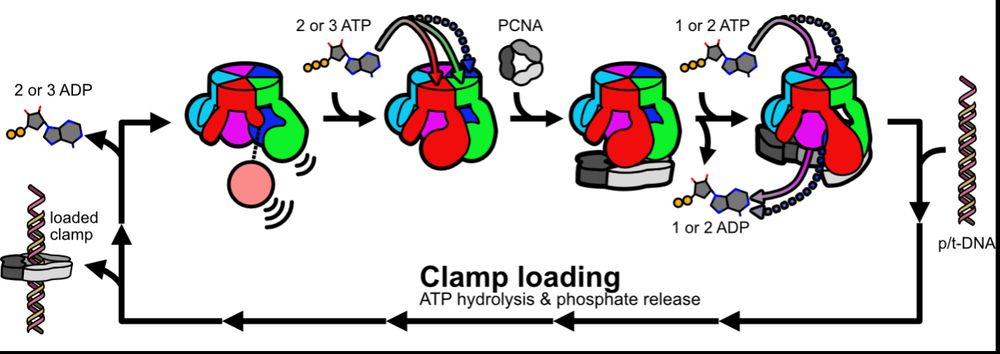
July 7, 2025 at 7:06 PM
Based on our data, we propose a model whereby fast ATP binding to some subunits readies RFC to bind PCNA, and then PCNA completes RFC’s nucleotide exchange en route to clamp loading. We propose this prevents futile ATP hydrolysis and helps ensure RFC binds PCNA before DNA. (12/16)
Josh performed more MD sims to try to understand how PCNA could promote nucleotide exchange in RFC. His sims predict that the D/E interface weakly bridged by ADP can be pried open as D binds PCNA, accelerating release. (11/16)
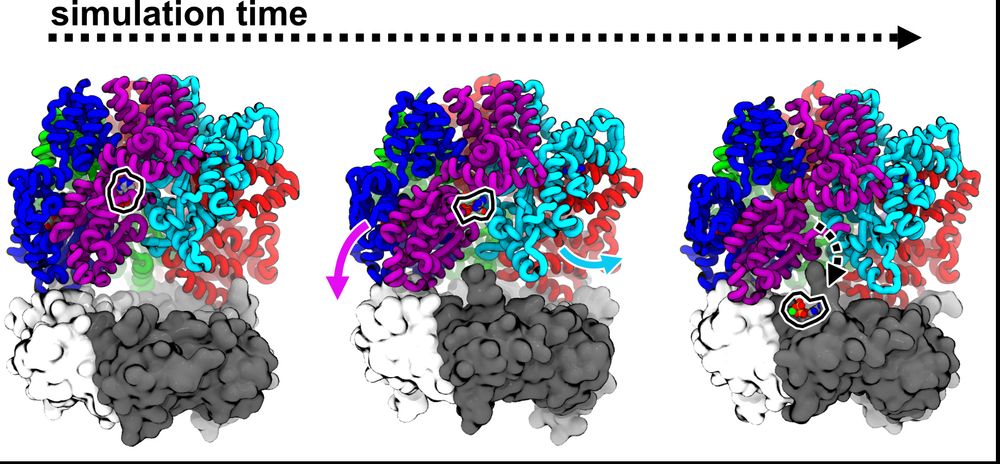
July 7, 2025 at 7:06 PM
Josh performed more MD sims to try to understand how PCNA could promote nucleotide exchange in RFC. His sims predict that the D/E interface weakly bridged by ADP can be pried open as D binds PCNA, accelerating release. (11/16)
Thus, “PCNA is a Nucleotide Exchange Factor for Clamp Loader ATPase Complex”! It only took us 10 posts to get to the title of the paper😉. But how does PCNA do this? (10/16)

woody from toy story is standing in front of a dresser and says `` well , it 's about time ! ''
ALT: woody from toy story is standing in front of a dresser and says `` well , it 's about time ! ''
media.tenor.com
July 7, 2025 at 7:06 PM
Thus, “PCNA is a Nucleotide Exchange Factor for Clamp Loader ATPase Complex”! It only took us 10 posts to get to the title of the paper😉. But how does PCNA do this? (10/16)
So, what catalyzes nucleotide exchange? Josh developed a FRET assay using a labeled ATP analog to monitor ATP binding to RFC. RFC alone binds some ATPs fast but then binds more ATP slowly, consistent with A&B (and maybe C) exchanging faster than D. PCNA speeds up these slow binding steps! (9/16)
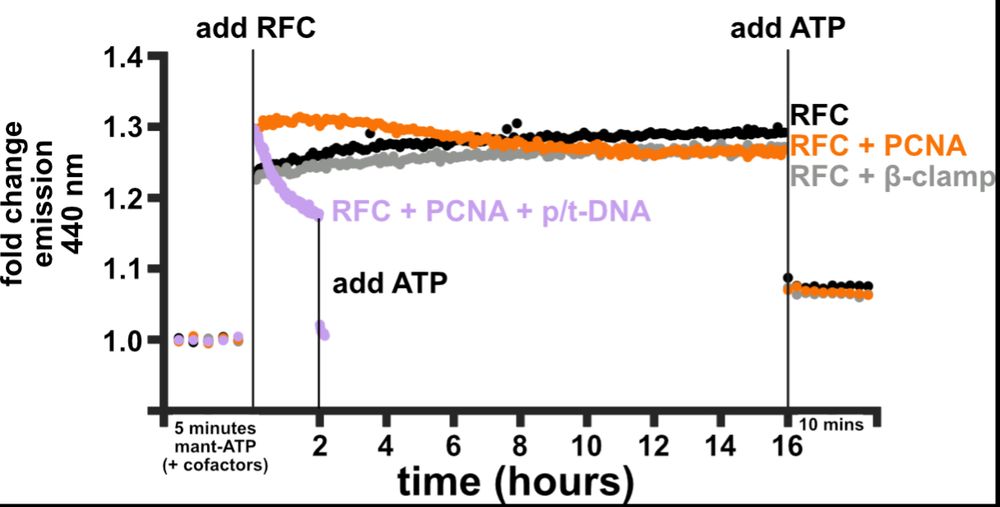
July 7, 2025 at 7:06 PM
So, what catalyzes nucleotide exchange? Josh developed a FRET assay using a labeled ATP analog to monitor ATP binding to RFC. RFC alone binds some ATPs fast but then binds more ATP slowly, consistent with A&B (and maybe C) exchanging faster than D. PCNA speeds up these slow binding steps! (9/16)
To test how interface opening plays a role in ADP release, Josh performed tRAMD(doi.org/10.1021/acs....), which is a technique that predicts relative release rates. He found that the half-off rate for C or D is slower than A or B, consistent with his cryo-EM. (8/16)
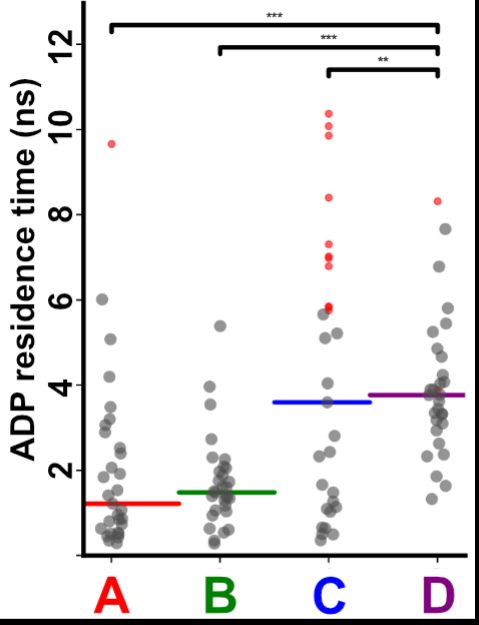
July 7, 2025 at 7:06 PM
To test how interface opening plays a role in ADP release, Josh performed tRAMD(doi.org/10.1021/acs....), which is a technique that predicts relative release rates. He found that the half-off rate for C or D is slower than A or B, consistent with his cryo-EM. (8/16)
Next, we wondered how the dynamics of RFC influence ADP release? So, Josh performed MD sims. His sims predict that ATP-interfaces are tighter than ADP ones, and that the B/C interface can open farthest, offering an explanation why this interface is apo in our cryo-EM reconstructions. (7/16)
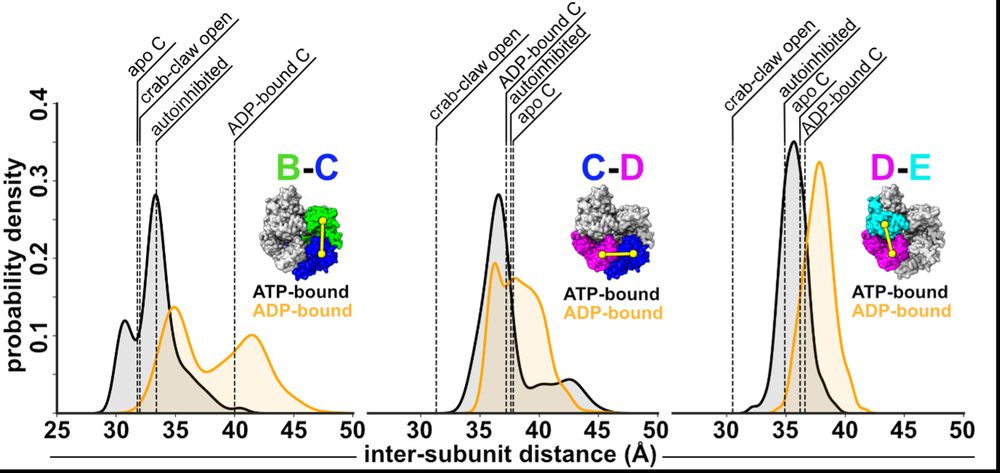
July 7, 2025 at 7:06 PM
Next, we wondered how the dynamics of RFC influence ADP release? So, Josh performed MD sims. His sims predict that ATP-interfaces are tighter than ADP ones, and that the B/C interface can open farthest, offering an explanation why this interface is apo in our cryo-EM reconstructions. (7/16)
First, we looked at how RFC subunits respond to nucleotide binding by comparing Josh’s apo subunits to our lab’s previous ATPgS-bound subunits and found that the B&C subunits’ lids rotate in opposite directions! We had never seen this in a AAA+ before (if you know of any, please let us know!) (6/16)
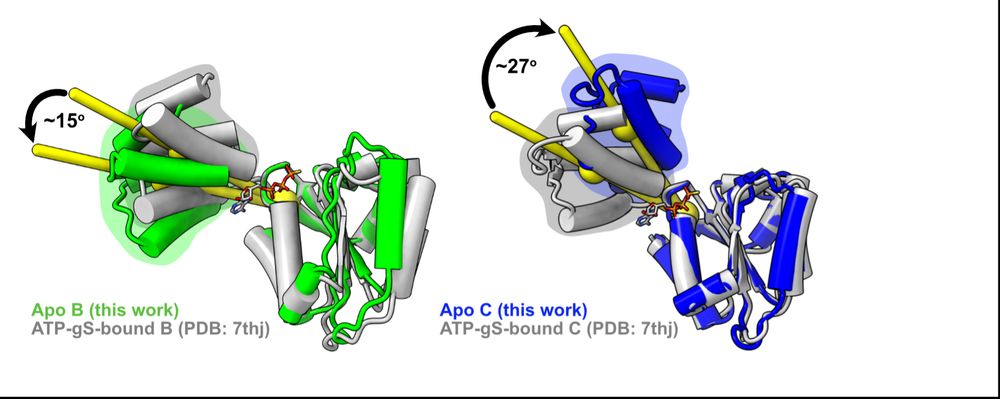
July 7, 2025 at 7:06 PM
First, we looked at how RFC subunits respond to nucleotide binding by comparing Josh’s apo subunits to our lab’s previous ATPgS-bound subunits and found that the B&C subunits’ lids rotate in opposite directions! We had never seen this in a AAA+ before (if you know of any, please let us know!) (6/16)
We wanted to understand the functional relevance of why they hold ADP tightly, so we started looking for clues, perhaps the most fun part of science. (5/16)
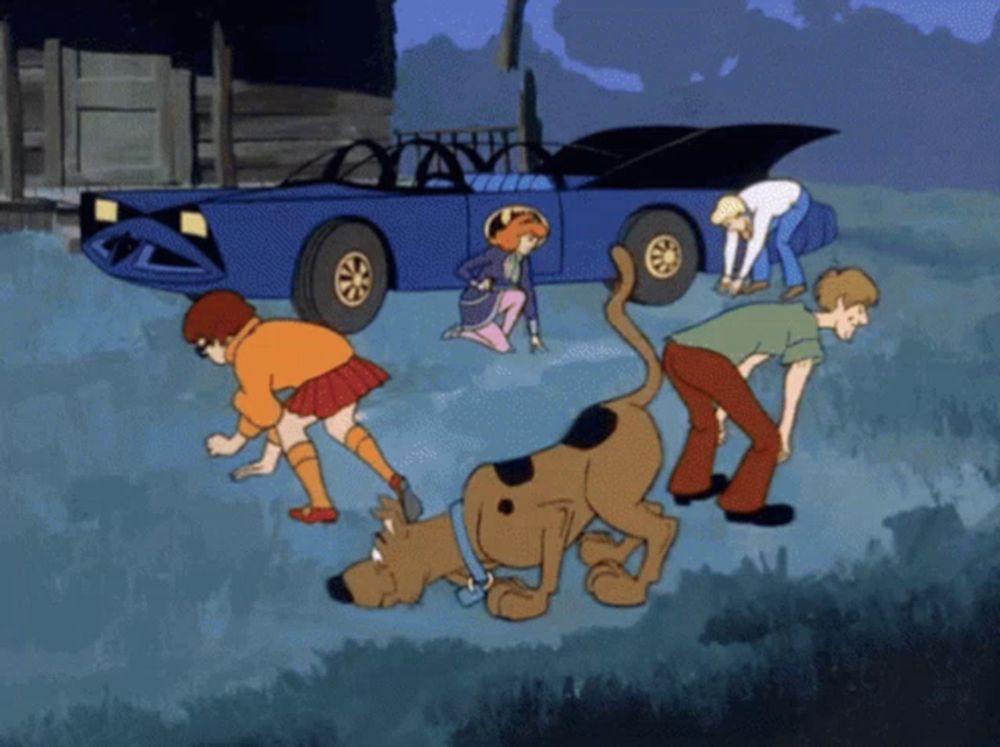
scooby doo and his friends are looking for something in the dirt
ALT: scooby doo and his friends are looking for something in the dirt
media.tenor.com
July 7, 2025 at 7:06 PM
We wanted to understand the functional relevance of why they hold ADP tightly, so we started looking for clues, perhaps the most fun part of science. (5/16)
Imagine our surprise when we saw that the C and D subunits were ADP-bound! Because he never added nucleotide, these ADPs must have co-purified with RFC over a 3 day prep, meaning that RFC releases ADP very slowly from these subunits. (4/16)
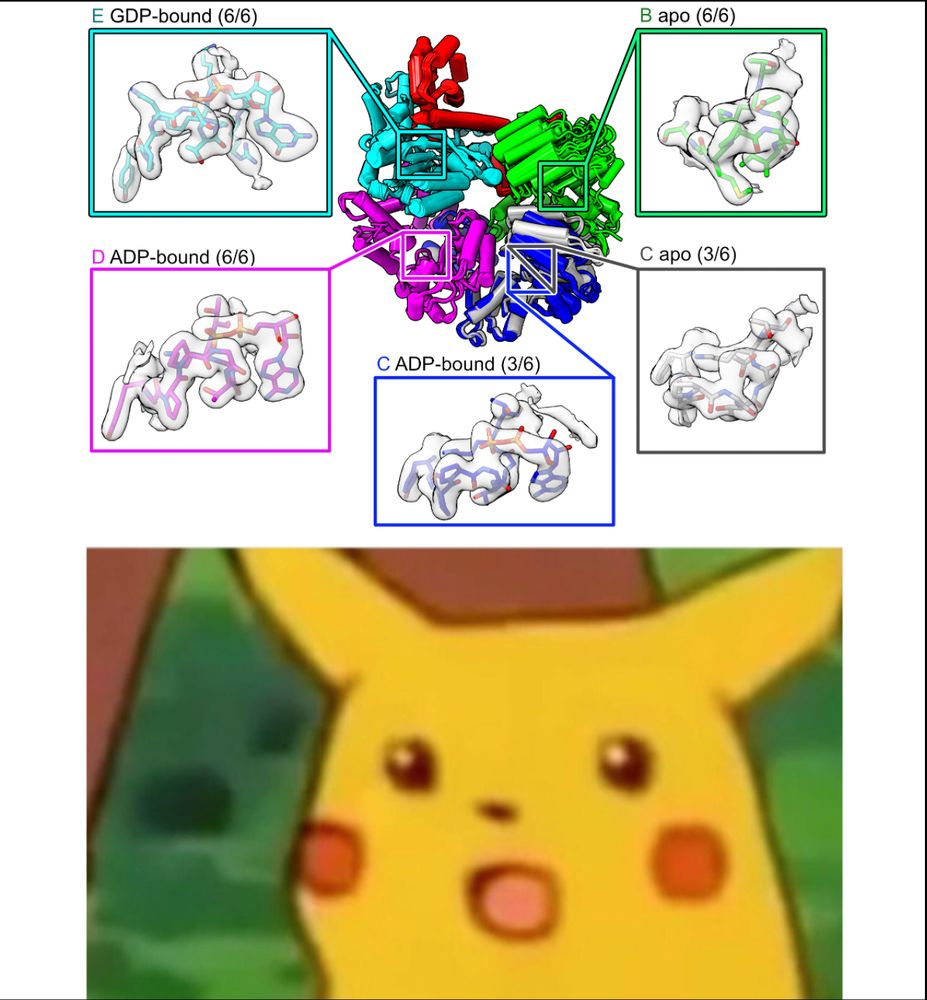
July 7, 2025 at 7:06 PM
Imagine our surprise when we saw that the C and D subunits were ADP-bound! Because he never added nucleotide, these ADPs must have co-purified with RFC over a 3 day prep, meaning that RFC releases ADP very slowly from these subunits. (4/16)
To get insights into RFC recycling, postdoc @joshuapajak.bsky.social determined the structure of RFC in the apo state. He got great overall resolution of the core RFC complex, but the AAA+ domain of the A subunit is missing, suggesting it is flexibly tethered when apo. (3/16)

July 7, 2025 at 7:06 PM
To get insights into RFC recycling, postdoc @joshuapajak.bsky.social determined the structure of RFC in the apo state. He got great overall resolution of the core RFC complex, but the AAA+ domain of the A subunit is missing, suggesting it is flexibly tethered when apo. (3/16)
Recently, our lab showed how an ATP-bound RFC loads PCNA onto DNA during replication and repair (doi.org/10.7554/eLif...). But RFC loads PCNA extremely fast, so that when RFC has done its job once, how does it prep for the next round? (2/16)

July 7, 2025 at 7:06 PM
Recently, our lab showed how an ATP-bound RFC loads PCNA onto DNA during replication and repair (doi.org/10.7554/eLif...). But RFC loads PCNA extremely fast, so that when RFC has done its job once, how does it prep for the next round? (2/16)
It’s been a long road, so massive props to everyone who worked on this project, including lab alum Emily Agnello, PhD, graduate students Julia Hobaugh and Rakeyah Ahsan, and Chen Xu, PhD and Kangkang Song, PhD at the fantastic UMass Chan CryoEM facility! /13

a cat is standing next to a bottle and says `` thank you !!! '' .
ALT: a cat is standing next to a bottle and says `` thank you !!! '' .
media.tenor.com
April 18, 2025 at 2:24 PM
It’s been a long road, so massive props to everyone who worked on this project, including lab alum Emily Agnello, PhD, graduate students Julia Hobaugh and Rakeyah Ahsan, and Chen Xu, PhD and Kangkang Song, PhD at the fantastic UMass Chan CryoEM facility! /13
Putting that together with decades of research into phage genome packaging, we propose a speculative model for how the Portal switches from DNA-pumping mode to Tail attachment mode, using the pressure-induced piston motion of Portal to displace the motor. /12

April 18, 2025 at 2:22 PM
Putting that together with decades of research into phage genome packaging, we propose a speculative model for how the Portal switches from DNA-pumping mode to Tail attachment mode, using the pressure-induced piston motion of Portal to displace the motor. /12
So how does the Portal know it’s time to close the pore? We got a clue by comparing the position of the Portal in capsids before and after DNA has been pumped in. The pressure from DNA pushes the Portal lower in the capsid aperture like a piston! /11
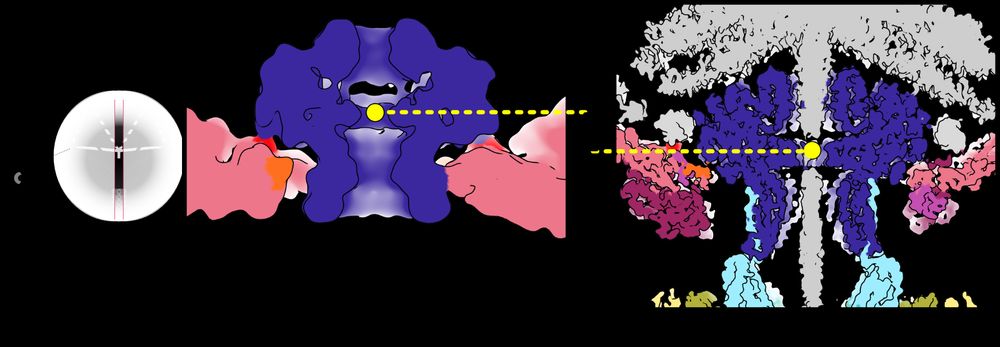
April 18, 2025 at 2:20 PM
So how does the Portal know it’s time to close the pore? We got a clue by comparing the position of the Portal in capsids before and after DNA has been pumped in. The pressure from DNA pushes the Portal lower in the capsid aperture like a piston! /11
On the left, Bayfield et al. showed the pore through Portal in an early, immature capsid. A specialized motor pumps the genome into the capsid through this open, hydrophilic pore. Then, it constricts in the mature phage, becoming narrow and hydrophobic. /10
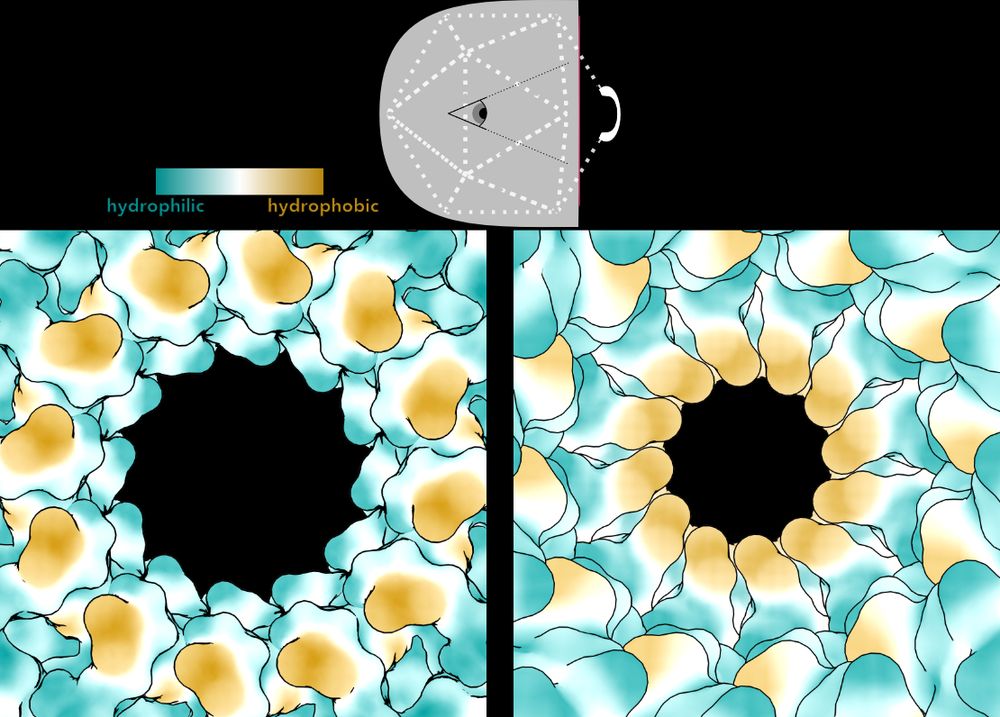

April 18, 2025 at 2:19 PM
On the left, Bayfield et al. showed the pore through Portal in an early, immature capsid. A specialized motor pumps the genome into the capsid through this open, hydrophilic pore. Then, it constricts in the mature phage, becoming narrow and hydrophobic. /10
In 2020, Ollie Bayfield and Fred Antson predicted that one component of the Neck complex, the Portal protein (dark blue), would be constricted to hold DNA in the capsid of this phage. And they were right! /9
Bayfield et al elifesciences.org/articles/55517
Bayfield et al elifesciences.org/articles/55517
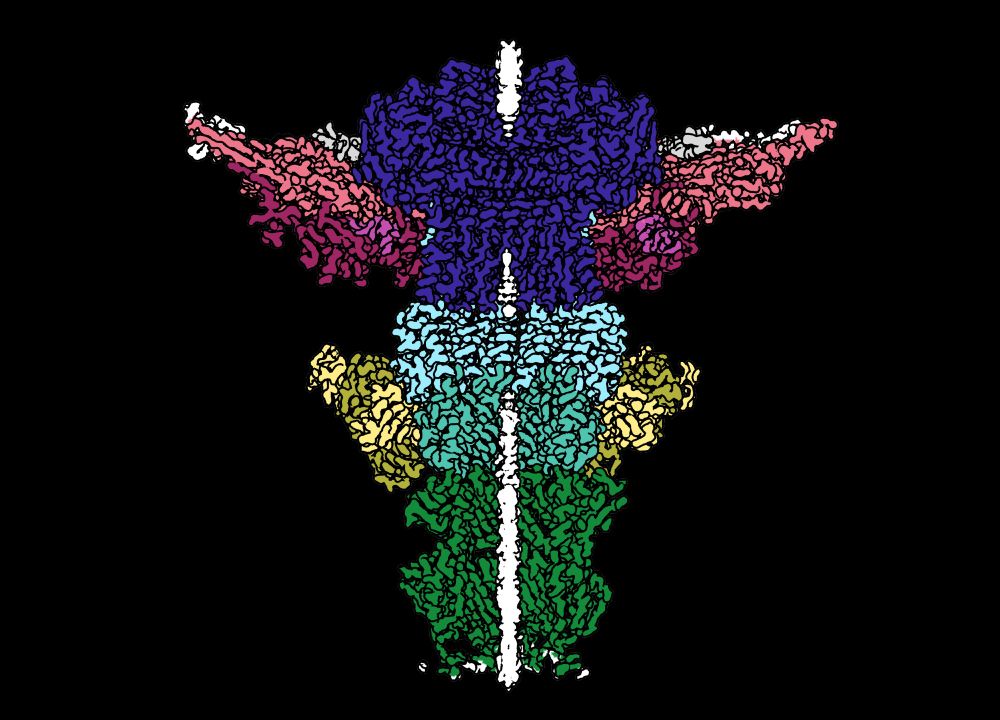
April 18, 2025 at 2:18 PM
In 2020, Ollie Bayfield and Fred Antson predicted that one component of the Neck complex, the Portal protein (dark blue), would be constricted to hold DNA in the capsid of this phage. And they were right! /9
Bayfield et al elifesciences.org/articles/55517
Bayfield et al elifesciences.org/articles/55517
We know that the Neck of this phage is sufficient to hold its DNA inside the capsid because we also isolated phage that have broken tails, and therefore nothing left but the Neck to retain DNA. /8

April 18, 2025 at 2:17 PM
We know that the Neck of this phage is sufficient to hold its DNA inside the capsid because we also isolated phage that have broken tails, and therefore nothing left but the Neck to retain DNA. /8
But the phage has another problem—it needs a channel through the Neck and Tail to inject its genome into the host when it infects, but it can’t shoot its shot until it finds the right host. How does it keep that channel closed? /7

April 18, 2025 at 2:16 PM
But the phage has another problem—it needs a channel through the Neck and Tail to inject its genome into the host when it infects, but it can’t shoot its shot until it finds the right host. How does it keep that channel closed? /7
Instead of beefing up electrostatic or hydrophobic interactions between these proteins, the phage intertwines different subunits to create topological linkages. This is the same strategy used to make a wicker basket strong! /6
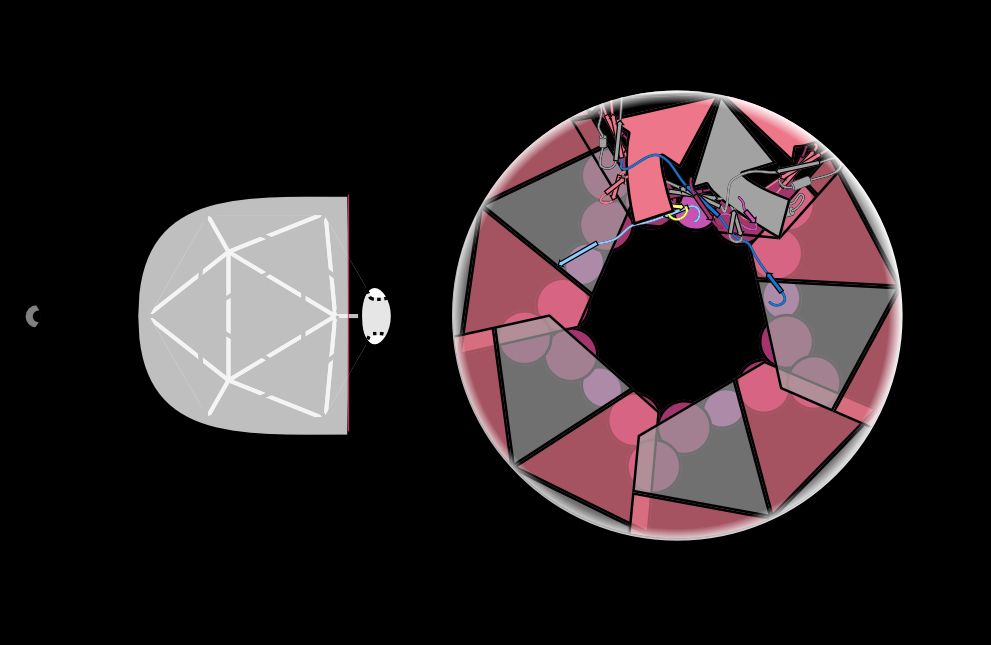

April 18, 2025 at 2:15 PM
Instead of beefing up electrostatic or hydrophobic interactions between these proteins, the phage intertwines different subunits to create topological linkages. This is the same strategy used to make a wicker basket strong! /6

